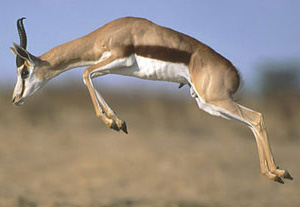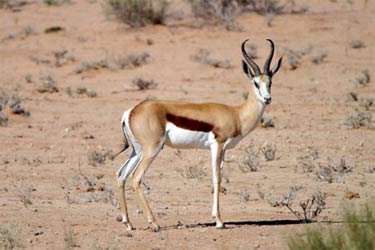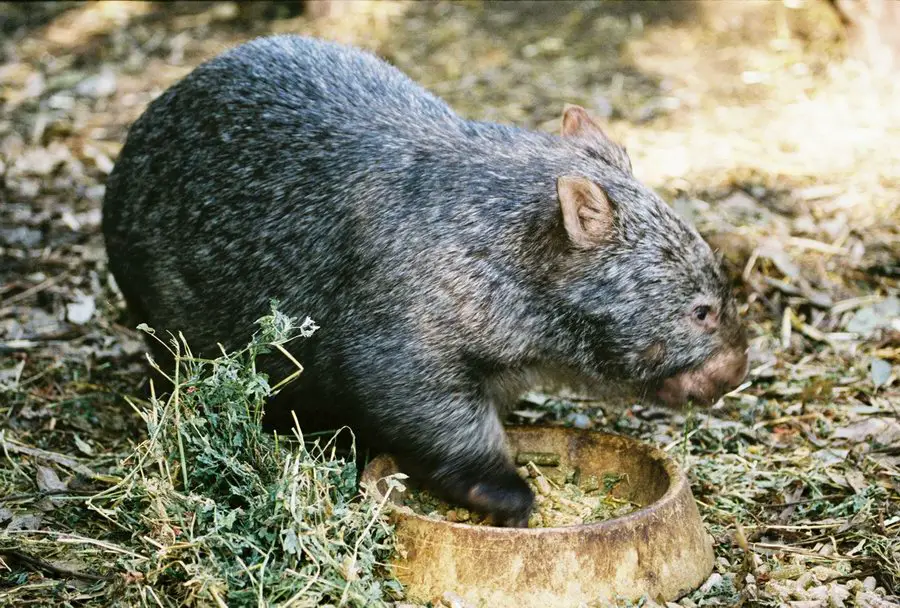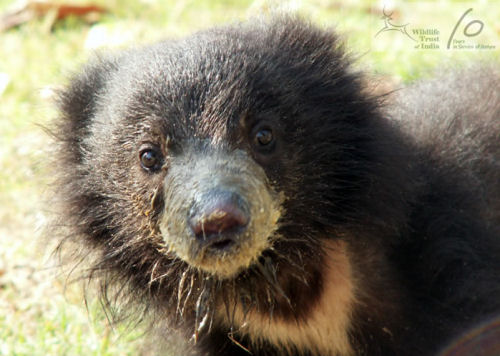Springbok
Springbok, in translation meaning jumping antelope has deserved this name for its unique jumping technique when it springs in the air, bending its back like a cat. These charming mammals live in arid and empty lowlands in South Africa.
The Springbok is an average sized antelope, reaching up to 90 cm back height and weighing as much as 50 kilograms. Both sexes have corded horns. Males grow horns up to 48 cm in length and they bend towards each other at their ends, drawing a heart-like shape. Females’ horns are typically shorter, narrower and they straighter. The body of the Springbok is covered with golden to reddish fur, with a white underpart and a black stripe on their side.
A few centuries ago Springboks could be seen in herds of tens of millions individuals. These groups migrated in the dryer periods to richer pastures. These enormous herds destroyed everything on their path, as millions of hooves stamped the ground beneath them. Last of these migrations was fixed in 1896, when the Springboks destroyed so much crop fields that the authorities decided to circumscribe these animals.
Nowadays, Springboks still live in herds, but their previous paths have been fenced to limit the damage these antelopes do to crop fields. Springboks first feed in early morning and then the second time in the evening. In noon they cover in shadow and rest. The herd is tightly bonded and at any time one of them sees danger, everyone else in the herd is warned with a specific signal – they ruffle up the white bristle on their backs.
Springbok’s mating period depends on the climate and region. First, the male Springbok gathers 10-30 females around him. Owners of these harems often fight for attention of females, occasionally injuring each other with the sharp horns. Gestation period lasts for about half a year, one to two Springboks are born who learn to walk seconds after birth. Springboks can reach up to 10 years of age in captivity.
These antilopes have many natural predators, but the biggest threat are the wild cats – leopards and lions. Young Springboks are also hunted by jackals and eagles. When in danger, the Springbok will start jumping and this behaviour hasn’t been fully explained – some think it’s a warning to other herd members, while other scientists think it’s a form of defense, used to confuse the enemy.

Local authorities have tried to decrease the number of Springboks multiple times. Although this has succeeded, the population is still very large and these antelopes are not endangered, even more – the population is increasing, thus posing more threat to local farmers.



